Factory Direct Modular Homes UK: What Can You Expect?
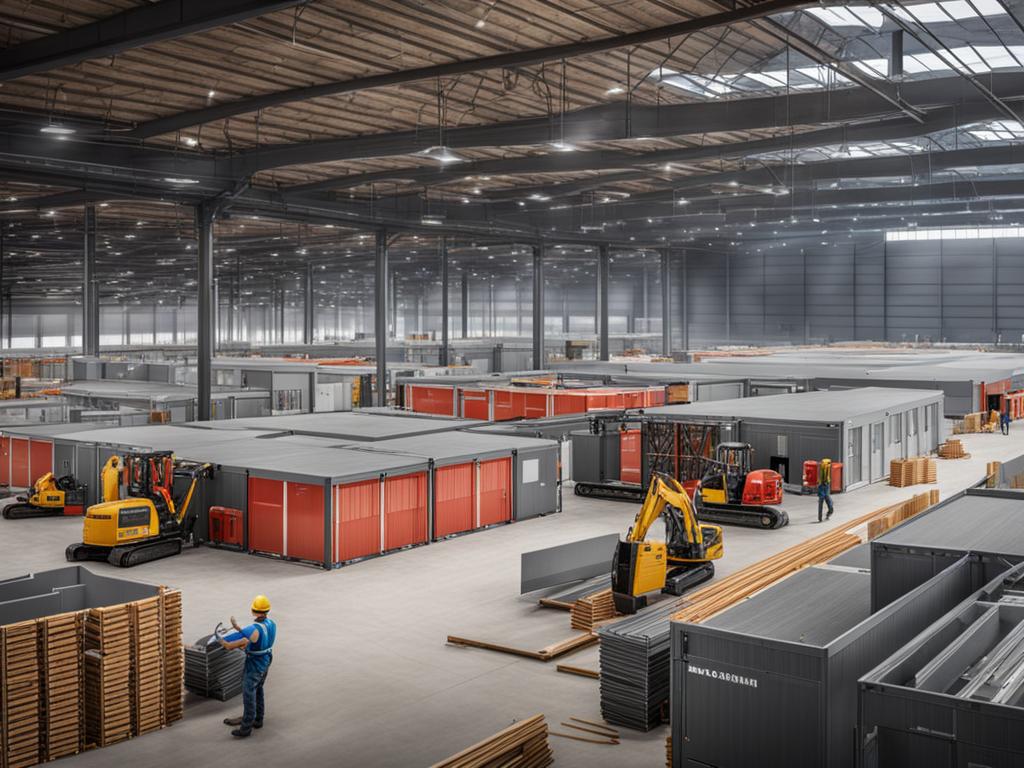
Welcome to our guide on factory direct modular homes in the UK! In recent years, modular homes have gained popularity as an affordable and customizable housing solution. If you’re considering this option, you may have questions about the construction process, materials used, financing options, and more. In this article, we’ll explore the ins and outs of factory direct modular homes and help you understand what to expect when embarking on this exciting journey.
Key Takeaways:
- Factory direct modular homes offer affordable and customizable housing solutions
- Modular homes are constructed in a factory setting and delivered to the site for assembly
- Modular homes can be made from a variety of materials, such as SIPs, cedar cladding, larch cladding, zinc, and bamboo
- Options for modular homes include turnkey homes, shell units, and basic builds
- Modular homes are energy-efficient and can incorporate eco-friendly features
What Are Modular Homes Made From?
Modular homes are constructed using Structurally Insulated Panels (SIPs), which provide a flat and smooth surface for the construction. These panels consist of a layer of insulation sandwiched between two layers of structural material, such as plywood or oriented strand board (OSB). SIPs are known for their excellent thermal performance, energy efficiency, and structural strength.
The external facade of modular homes can be enhanced with various materials to create an appealing and durable finish. Popular options include:
- Cedar Cladding: This natural wood material provides a warm and visually striking appearance. Cedar cladding is known for its durability and resistance to rot and insects.
- Larch Cladding: Larch wood offers a unique and beautiful grain pattern, adding character to the exterior of the modular home. It is also naturally durable and requires minimal maintenance.
- Zinc: Zinc is a versatile and modern cladding material that offers a sleek and contemporary look. It is durable, weather-resistant, and can develop an attractive patina over time.
- Bamboo: For those seeking eco-friendly alternatives, bamboo cladding can be an excellent choice. Bamboo is a fast-growing and renewable material that provides strength and natural beauty.
By incorporating these materials, modular homes can achieve both aesthetic appeal and longevity. These eco-friendly materials not only enhance the visual appeal of the homes but also contribute to sustainable construction practices.
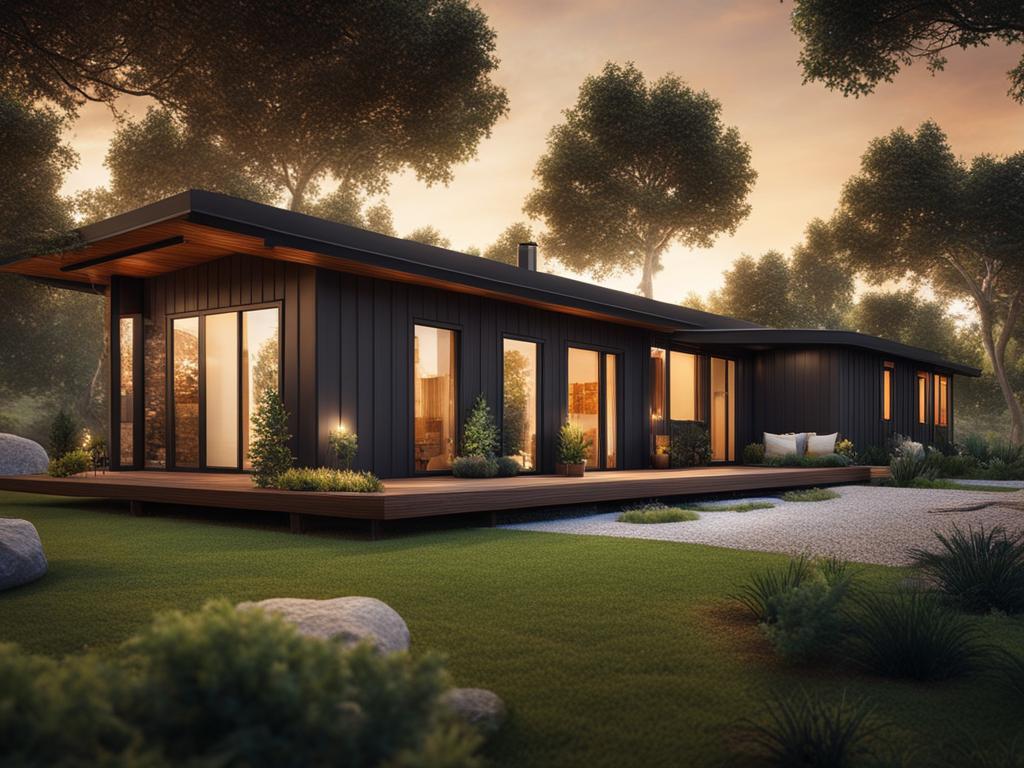
Options for Modular Homes
When it comes to modular homes, there are various options available to suit different preferences and budgets. Whether you’re looking for a fully finished, ready-to-move-in home or a more hands-on approach, modular construction offers flexibility and customization.
Turnkey Homes
Turnkey homes are the perfect choice for those who want a hassle-free experience. These fully finished houses are constructed according to the owner’s specifications. From the layout to the fixtures and fittings, every detail is tailored to your preferences. With turnkey homes, you can avoid the stress of managing the construction process and enjoy a move-in-ready home.
Shell Units
If you prefer a more DIY approach, shell units might be the right option for you. Shell units come with all the necessary components, including walls, roof, and windows, but require the owner to assemble them. This allows for greater involvement in the construction process and the opportunity to save on labor costs. It’s a rewarding experience for those who enjoy hands-on projects.
Basic Build
Basic build options offer a balance between customization and owner involvement. With basic build homes, the modular company provides the major components, such as the walls and roof, while the owner takes charge of fitting the essential elements. This includes installing the flooring, kitchen, and bathroom. Basic build homes allow you to add your personal touch to the interior while benefiting from the efficiency and quality of modular construction.
Customization
Modular homes offer a certain degree of customization, allowing you to tailor the design to your preferences. While turnkey, shell units, and basic build options provide flexibility, additional bespoke features or modifications may increase the overall cost of the modular home. It’s important to discuss your customization requirements with the modular company to ensure feasibility and cost-effectiveness.
With a range of options available, modular homes provide versatility and the opportunity to create your dream home. Whether you prefer a fully finished turnkey home or a more hands-on approach with shell units or basic build options, modular construction offers a cost-effective and customizable housing solution.

Energy Efficiency of Modular Homes
Modular homes are renowned for their energy efficiency, making them an environmentally friendly and cost-effective housing option. These homes can easily incorporate various energy-saving measures to minimize energy consumption and reduce carbon footprint.
One essential energy-saving measure in modular homes is insulation. By using high-quality insulation materials, modular homes can achieve superior thermal performance, ensuring that heat is retained during the colder months and kept out during the warmer seasons. This results in reduced energy usage for heating and cooling, leading to significant cost savings.
Triple-glazing is another feature commonly found in energy-efficient modular homes. This type of glazing consists of three layers of glass separated by a layer of insulating gas, providing enhanced thermal insulation and noise reduction. Triple-glazed windows help to maintain a consistent indoor temperature, reducing the need for excessive heating or air conditioning, and maximizing energy efficiency.
Passivhaus Standard
Many modular homes are constructed to meet or exceed the rigorous standards of the Passivhaus Standard. The Passivhaus Standard is a certification system that represents the highest level of energy efficiency. Homes built to this standard are designed to be ultra-low energy, requiring minimal heating and cooling. They typically feature airtight construction, superior insulation, and mechanical ventilation with heat recovery.
By opting for a smaller and greener design, modular homes can further enhance their energy efficiency. Efficient floor plans and thoughtful space utilization can result in reduced energy consumption and lower utility bills. Design elements such as strategic window placement and natural lighting can also contribute to energy savings.
Overall, modular homes offer the opportunity to embrace sustainable living through their energy-saving measures, adherence to the Passivhaus Standard, and careful design considerations. These homes not only provide comfortable and eco-friendly living spaces but also help homeowners save on energy costs in the long run.
Planning Permission and Modular Homes
Before purchasing land for a modular home, it is crucial to check with the local council’s planning department to ensure that permission is likely to be granted. Collaborating with the modular company, the homeowner, and the local planning authorities is key to obtaining the necessary approvals.
Modular homes can be architecturally interesting and can enhance the streetscape when designed to complement the surrounding buildings. Adhering to the streetscape’s requirements, they can also be built on regular land in an ordinary street. This allows for seamless integration and compatibility with the surroundings, creating a harmonious environment.
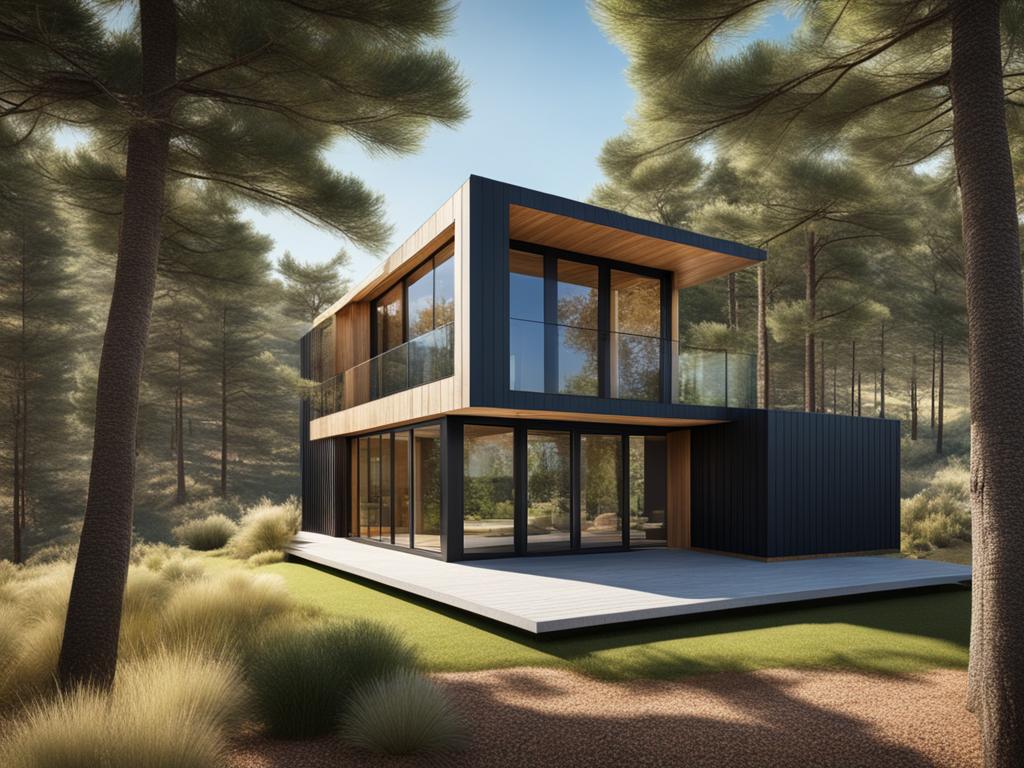
Financing and Insuring Modular Homes
When it comes to financing and insuring modular homes, there are important factors to consider. One of the key elements is the availability of structural warranties. These warranties play a significant role in securing financing for modular homes, as they provide assurance of the quality and durability of the construction.
However, not all warranty providers cater to modern methods of construction. Therefore, it is crucial to find a provider that recognizes the specific construction system used in modular homes. By choosing a warranty provider that understands and supports modular construction, homeowners can have peace of mind knowing that their investment is protected.
Discussing financing options with mortgage providers is also crucial when it comes to modular homes. Due to the unique construction process, staged loans are often required. This means that the funds are released in stages as the construction progresses, ensuring that the project stays on track and meets all necessary regulations.
Additionally, homeowners should ensure that their insurance provider offers a 10-year warranty, as this is generally a requirement for mortgage lenders when purchasing new homes. This warranty provides protection against potential defects and issues that may arise in the first decade of homeownership.
By considering structural warranties, mortgage financing options, staged loans, and 10-year warranties, homeowners can navigate the financing and insuring process with confidence and peace of mind.

Longevity and Maintenance of Modular Homes
Modular homes are built with durability in mind, designed to withstand the test of time. The lifespan of a modular home depends on several factors, including the quality of materials used, the build quality, and its ability to withstand the elements.
To ensure the longevity of your modular home, it is crucial to choose high-quality materials. Opting for reputable manufacturers and builders who prioritize quality and durability can significantly impact the lifespan of your home. By selecting sturdy materials that can endure harsh weather conditions, you can enhance the durability of your modular home.
Regular maintenance plays a vital role in preserving the longevity of modular homes. Simple tasks such as regular cleaning, painting, and checking for any signs of wear and tear can help identify and resolve issues before they escalate. Additionally, addressing repairs promptly and efficiently is essential to prevent minor issues from becoming major problems.
One of the advantages of modular homes is their ability to withstand various elements. Strong construction techniques and the use of quality materials contribute to their resilience. In regions prone to extreme weather conditions, modular homes can be built to meet specific requirements, making them capable of withstanding hurricanes, heavy snow loads, and other challenges.
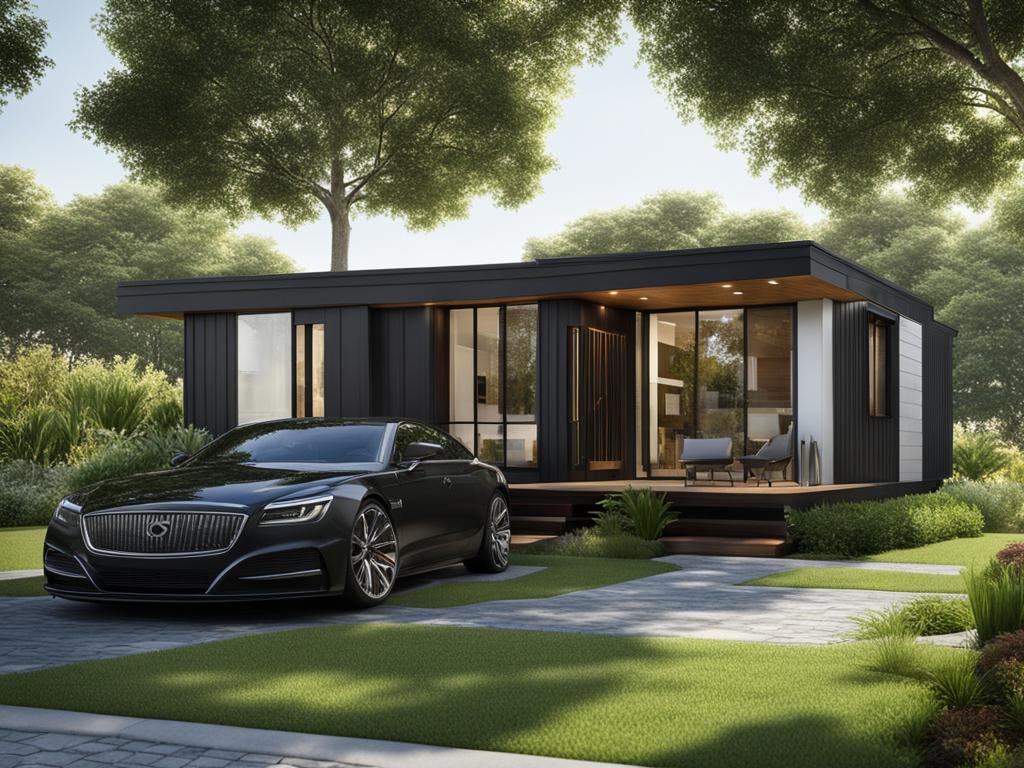
Regular maintenance should include inspecting the roof, windows, and doors for any signs of damage or leaks. Ensuring that the foundation remains stable and properly maintained is also crucial for the long-term structural integrity of the modular home.
Overall, modular homes have an estimated lifespan of at least 60 years, with some materials and construction methods lasting even longer. By selecting high-quality materials, maintaining the home diligently, and addressing any potential issues promptly, homeowners can prolong the lifespan of their modular homes.
Conclusion
Factory direct modular homes offer a practical solution for affordable housing in the UK. With the housing crisis still looming, modular construction provides a faster and more cost-effective alternative to traditional brick-and-mortar homes. These homes can be customized to meet individual needs and preferences, ensuring comfortable and personalized living spaces.
In addition to their affordability, modular homes embrace sustainable and energy-efficient features. The construction process reduces waste and energy consumption, making them a greener option for the future of housing. By incorporating eco-friendly materials and energy-saving measures, modular homes contribute to a more sustainable living environment.
As the industry continues to grow, modular homes have the potential to address the housing shortage while maintaining high-quality standards. With proper planning, financing options, and regular maintenance, modular homes can provide durable and comfortable housing solutions for the long term. The future of housing in the UK looks promising with the advent of factory direct modular homes.
FAQ
What are factory direct modular homes?
Factory direct modular homes are affordable and customizable housing solutions that are constructed in a factory setting. They are then delivered to the site ready for assembly, offering more efficiency and cost-effectiveness compared to traditional brick-and-mortar houses.
What materials are modular homes made from?
Modular homes are primarily constructed using Structurally Insulated Panels (SIPs), which provide a flat and smooth surface. The external facade of the homes can be decorated with various materials such as cedar or larch cladding, zinc, or even bamboo for a more eco-friendly option.
What options are available for modular homes?
There are different options available for modular homes. Turnkey homes are fully finished houses built to the owner’s specifications. Shell units come with all the necessary components but require the owner to assemble them. Basic build options involve the modular company providing the major components, while the owner fits the essentials such as flooring, kitchen, and bathroom.
Are modular homes energy-efficient?
Yes, modular homes are known for their energy efficiency. They can easily incorporate energy-saving measures such as insulation and triple-glazing. Many modular homes are certified to the Passivhaus standard, which represents the highest level of energy efficiency.
How do I obtain planning permission for a modular home?
Before purchasing land for a modular home, it is crucial to check with the local council’s planning department to ensure that permission is likely to be granted. Collaboration between the modular company, the homeowner, and the local planning authorities is key to obtaining the necessary approvals.
How can I finance and insure a modular home?
Structural warranties play a significant role in securing financing for modular homes. It is important to find a provider that recognizes the specific construction system used. Staged loans may be necessary due to the modular construction process. Homeowners should also ensure that their insurance provider will issue a 10-year warranty, as this is generally a requirement for mortgage lenders when purchasing new homes.
What is the longevity of a modular home?
The lifespan of a modular home depends on various factors such as the quality of materials used, build quality, and its ability to withstand the elements. With proper maintenance, the average lifespan of a modular home in the UK is estimated to be at least 60 years, with some materials and construction methods lasting even longer.
What are the benefits of factory direct modular homes?
Factory direct modular homes offer a cost-effective and customizable housing solution in the UK. They have the potential to address the housing crisis by providing good-quality homes at a faster rate. The use of modular construction methods and the adoption of sustainable and energy-efficient features make modular homes a promising option for the future of housing in the UK.

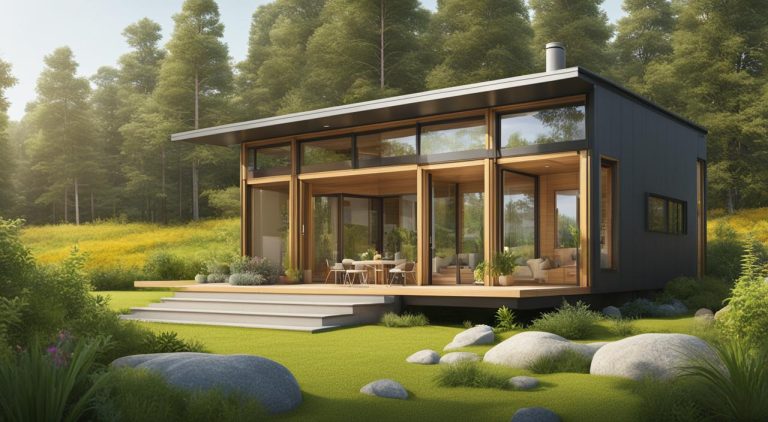
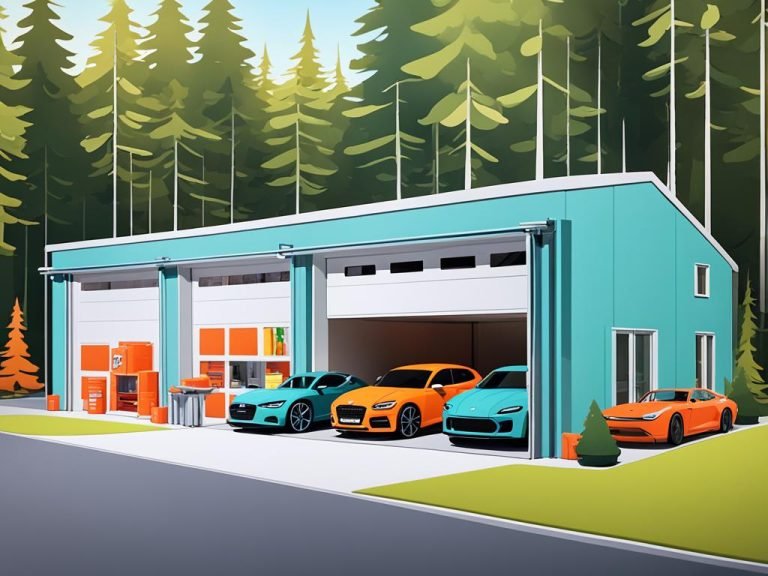

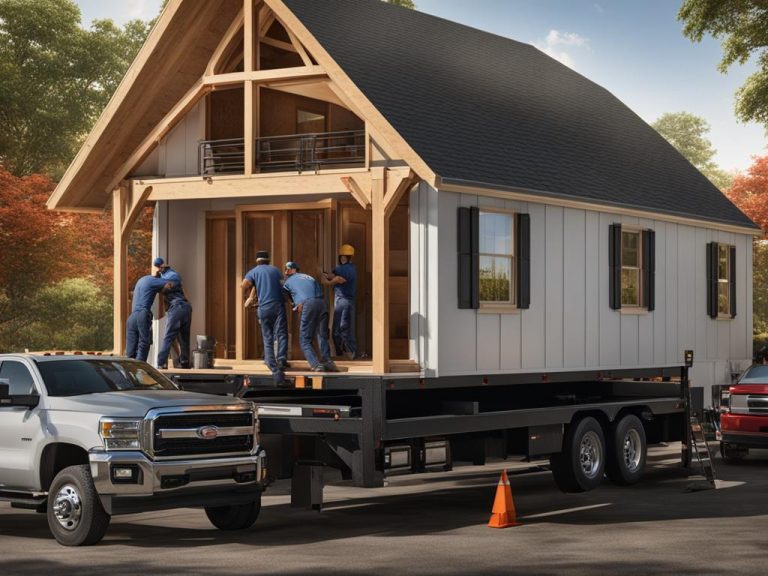

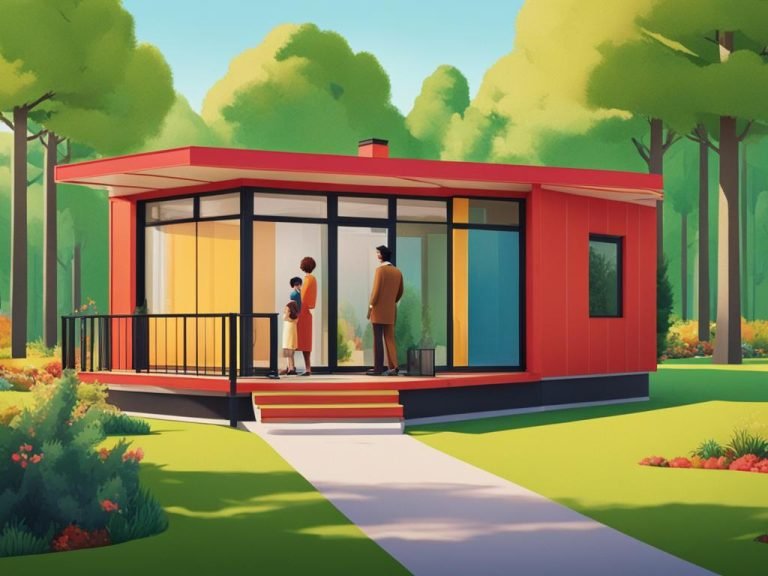
95, 1486 1493 2019 how to buy priligy im 16 years old Occasionally, however, a well differentiated carcinoma may be confused with atypical hyperplasia
I don’t think the title of your article matches the content lol. Just kidding, mainly because I had some doubts after reading the article.
Your article helped me a lot, is there any more related content? Thanks!